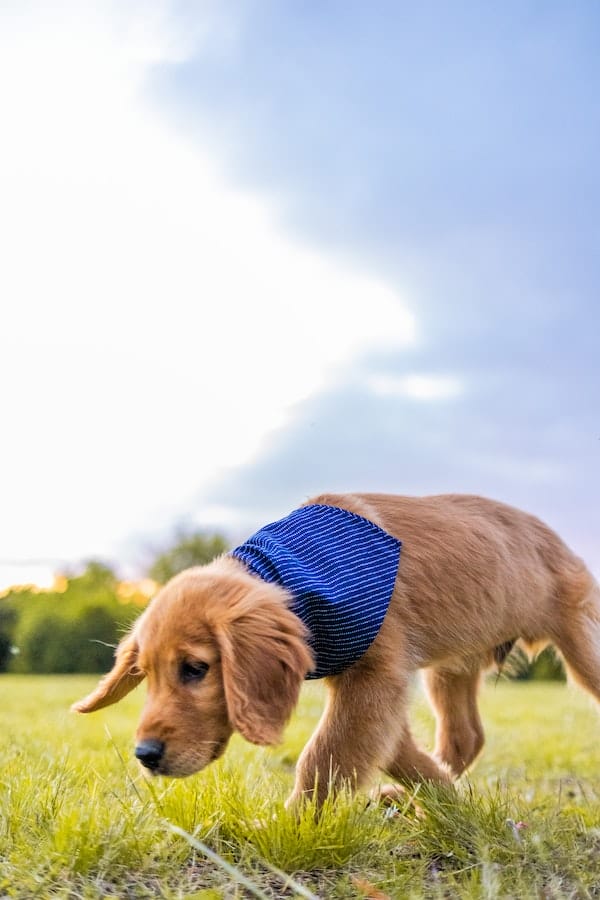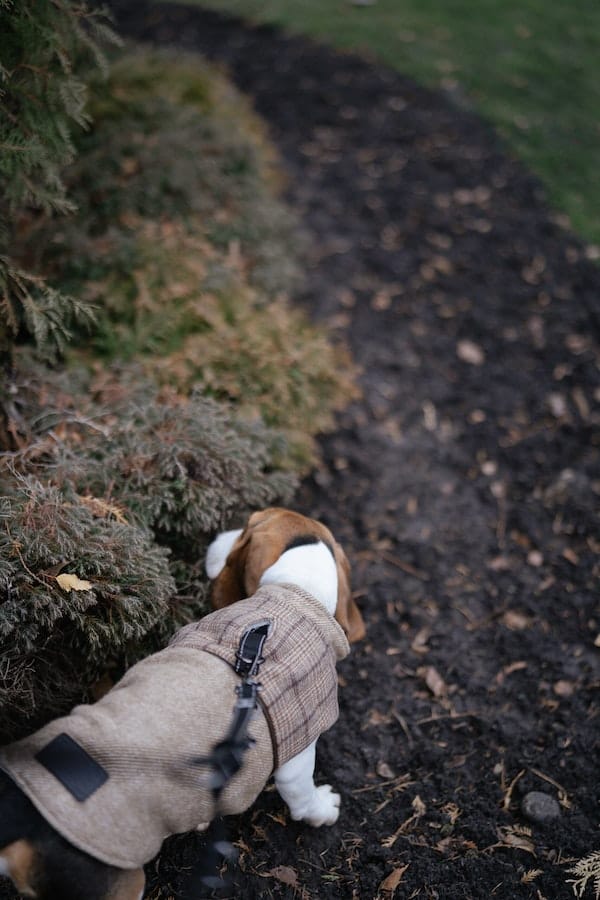
Have you ever wondered about those incredible dogs with an extraordinary ability to locate human remains with exceptional accuracy?
Let’s embark on an exploration into the world of cadaver dogs – these remarkable four-legged heroes who bring immense value across various domains, from delving into forensic investigations to playing the role of superheroes in search and rescue operations.
In this piece, we’re set to delve deep into the universe of cadaver dogs, uncovering their history, different categories, their impressive skills, training methodologies, the advantages they offer, and the challenges they bravely confront.
What is a Cadaver Dog?
Cadaver dogs possess an extraordinary sense of smell, allowing them to detect human remains in various situations.
These scent-savvy canines act as super detectives, uncovering hidden or decomposed remains in places humans can’t access.
Their noses are like magic wands, revealing secrets that our senses miss.
From crime scenes to disaster areas, these dogs play a vital role in investigations, showcasing their incredible ability to uncover mysteries through their exceptional sense of smell.
The History of Cadaver Dogs
Cadaver dogs have a captivating history linked to their exceptional sense of smell.
Their formal role emerged in the early 20th century, notably during World War I and II, aiding in locating casualties on battlefields.
Evolving over time, these dogs transformed into modern scent detectives with specialized training to detect human remains.
They have seamlessly transitioned from ancient scent trackers to invaluable modern assets, showcasing their remarkable abilities across history and providing closure to families.

Different Types of Cadaver Dogs
Cadaver dogs can be categorized into two main types: active and passive.
Active cadaver
Active cadaver dogs are highly trained scent detectives with an exceptional sense of smell.
They actively search for and locate specific scent sources.
They’re like treasure hunters following invisible scent trails, even in challenging environments like crime scenes or disaster areas.
These dogs are nature’s detectives, decoding the secrets of the air one sniff at a time.
Their incredible ability to track scents is like Sherlock Holmes following breadcrumbs of scent to uncover hidden truths.
Passive cadaver
Passive cadaver dogs are scent experts who work differently from active ones.
They alert their handlers to the presence of a scent without revealing the exact location.
They’re like silent partners in an investigation, giving hints without giving away the whole secret.
These dogs are like suspense-builders in a detective story, guiding their handlers through the scent puzzle while leaving a bit of mystery in the air.
They’re scent scientists who help unfold the investigation step by step, like narrators of an unfolding scent story.
Both types play essential roles in diverse scenarios, depending on the nature of the search.
The Different Skills of Cadaver Dogs

There are several skills that are possessed by cadaver dogs. These include:
Exceptional olfactory abilities
Cadaver dogs have amazing olfactory capacities that put them aside.
Their feeling of smell goes past the ordinary, allowing them to distinguish fragrances that are almost outside the realm of possibilities for people to see.
Finding the unseen
These dogs are like scent superheroes, able to uncover the scent of human remains even in the most challenging situations.
Whether it’s buried deep underground, hidden underwater, or concealed under piles of debris, they can still pick up on those elusive scents.
Chemical compounds and decomposition
The secret to their success lies in their ability to sense specific chemical compounds released during the process of decomposition.
It’s like they’ve got a built-in chemistry lab in their noses, allowing them to identify scents associated with deceased individuals.
Sensitive sniffers
These dogs have noses that are tuned to a whole new level of sensitivity.
They can pick up on the faintest traces of those unique chemical compounds, even if they’re buried beneath layers of earth, submerged in water, or hidden amidst rubble.
Live vs. deceased
What’s truly astonishing is their ability to distinguish between live and deceased scents.
It’s like they’ve got a scent radar that can tell the difference between the aroma of life and the scent of what once was.
This skill is crucial for accurate detection during search and rescue missions.
Unraveling mysteries
Think of these cadaver dogs as detectives of the scent world.
They’re like bloodhounds of the beyond, sniffing out the stories that the air holds secret.
Their heightened sensitivity and specialized training make them vital assets in various scenarios, from crime scenes to disaster areas.
Solving the unsolvable
While we humans rely on our sight and hearing, these dogs tap into an entirely different realm of perception.
Their noses are like compasses guiding them through an invisible world of scents, helping them solve mysteries that would otherwise remain hidden.
Scent warriors
In a way, these dogs are warriors of the scent spectrum, battling against challenges like depth, concealment, and time itself.
Their noses are the tools they use to unearth stories that have been buried by circumstance or disaster.
Unveiling truths
When you see a cadaver dog at work, remember that behind those wagging tails and curious sniffs is an incredible power – the power to bring closure, uncover secrets, and shine a light on what was once obscured.
They’re like scent archaeologists, digging up truths from beneath layers of the unknown.
The Training of Cadaver Dogs

Training cadaver dogs is a meticulous process that involves exposing them to various scents associated with decomposing human remains.
- Meticulous training process: Training cadaver dogs is an intricate and detailed process. It’s like crafting a masterpiece, where every step counts in creating these scent-savvy canines.
- Exposure to various scents: The training begins by exposing the dogs to an array of scents linked to decomposing human remains. These scents might come from different stages of decomposition, helping the dogs develop a keen understanding of the distinct aromas associated with these situations.
- Positive reinforcement techniques: Just like how we encourage good behavior in pets, cadaver dog training employs positive reinforcement. When the dogs identify the target scent, they’re rewarded with treats or playtime. It’s like a scent-based game of “earn and learn.”
- Creating associations: Over time, the dogs form strong connections between the scent of human remains and the positive rewards they receive. It’s like they’re putting pieces of a puzzle together, associating a particular smell with the thrill of a treat or a fun play session.
- Advancing to complex exercises: As the training progresses, the exercises become more challenging. The dogs are presented with increasingly difficult scent sources, mimicking real-world scenarios they might encounter in the field. It’s like they’re leveling up in a scent-based video game.
- Sharpening detection skills: These advanced exercises are like mental and olfactory workouts for the dogs. They need to use their heightened sense of smell to pick out the target scent from a sea of other scents. It’s like finding a specific needle in a haystack of smells.
- Precision and accuracy: The training is all about honing the dogs’ ability to accurately detect the scent of human remains. It’s like turning them into scent snipers, where they can pinpoint a specific scent even in complex environments.
The Benefits of Using Cadaver Dogs
The utilization of cadaver dogs offers numerous benefits in different fields.
- Forensic investigations: Cadaver dogs play a crucial role in forensic investigations. They’re like scent detectives who can uncover hidden remains that might escape human detection. Their noses become the ultimate tools for unraveling mysteries and providing crucial evidence in criminal cases.
- Disaster scenarios: In times of disaster, cadaver dogs are the legends that move toward to help. Whether it’s a tremor, a structure breakdown, or a characteristic calamity, these canines resemble the encouraging sign in the haziest of times.
- Bringing closure: Their ability to locate victims brings closure to grieving families. It’s like a comforting hand reaching out amidst chaos, helping families find answers and find peace in knowing the fate of their loved ones.
- Aiding in recovery efforts: Cadaver dogs are like the first responders in the scent world. They help rescue teams locate those who are trapped or buried, guiding efforts to bring people to safety. They’re like the guiding stars that lead the way.
- Efficient search operations: Time is of the essence in search and rescue missions. These dogs are like time travelers, accelerating search operations by quickly pinpointing scent sources. Their efficiency helps save crucial hours, increasing the chances of successful outcomes.
- Resource savings: By speeding up search operations, these dogs also save valuable resources. It’s like they’re maximizing the impact of every effort, making sure that every resource is used effectively and efficiently.

The Challenges of Using Cadaver Dogs
While cadaver dogs possess remarkable skills, there are several challenges that you should know. These include:
- Factors affecting effectiveness: Despite their incredible skills, cadaver dogs aren’t immune to challenges. Weather conditions, varying terrains, and the age of remains can impact their performance. It’s like they’re navigating a puzzle where the pieces keep changing shape.
- Age of remains: The time since a person’s passing can affect the scent left behind. Fresher remains might emit stronger scents, while older ones could be fainter. These dogs are like time-travelers who must decipher a scent’s history to lead investigators in the right direction.
- Training maintenance: To keep their skills sharp, cadaver dogs need consistent practice. It’s like athletes training for a big game – regular exercises keep them in peak condition. They need ongoing exposure to relevant scents to stay at the top of their scent detection game.
- Well-being and emotional challenges: These dogs are exposed to distressing situations regularly. It’s like they’re the emotional first responders, feeling the weight of the scenes they encounter. Preventing emotional burnout and ensuring their well-being is a significant challenge.
- Balancing effectiveness and care: Finding the balance between their effectiveness in tasks and their emotional well-being is a delicate act. It’s like treading a tightrope, ensuring they remain skillful while also providing them with the support they need.
Conclusion
Cadaver dogs are extraordinary allies in the world of scent detection, possessing history, skills, and training that make them stand out.
Their ability to locate hidden scents is like a superpower, and their training process is a masterpiece in the making.
Despite challenges like weather and terrain, they remain steadfast in their scent navigation.
They bring closure to families and answers to investigators, embodying the strong bond between humans and animals.
These dogs are like scent magicians, uncovering secrets and showcasing the incredible connection between humans and their furry companions.
FAQs
Cadaver dogs have demonstrated impressive accuracy rates, often detecting human remains even when concealed underground or submerged underwater.
While many dog breeds possess a strong sense of smell, not all dogs are suitable for cadaver dog training. Breeds with exceptional olfactory abilities, such as German Shepherds and Belgian Malinois, are often preferred.
No, cadaver dogs are utilized in various scenarios, including criminal investigations, disaster response, and archaeological digs.
Cadaver dog training can take several months to a few years, depending on the dog’s aptitude, the complexity of training, and the desired proficiency level.


GIPHY App Key not set. Please check settings